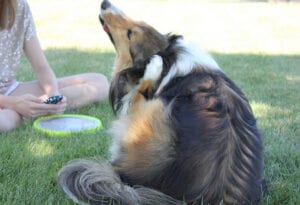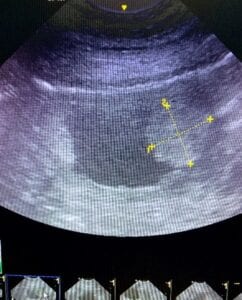Read Our Blogs
K-Laser Therapy Now Offered at Metro Paws – Oak Cliff!
[printer-friendly version] K-LASER therapy does not treat conditions; rather it stimulates the body’s inherent healing mechanisms via a process called photobiomodulation. Through a combination of different wavelengths, power and frequency of laser light K-LASER is able to achieve improved healing times, pain reduction, increased circulation and decreased swelling. Laser Therapy has been utilized in human…
Read MorePet Emergencies
Dr. Kathryn Junkins Sarpong, DVM, DABVP [printer-friendly version] Do you head to the pet ER, call your vet, panic, or just wait it out? How do you know what constitutes a pet emergency? I worked several years in an animal ER and saw lots of things that could have waited and saved you some hassle…
Read MoreCBD Oil In Pets – Myth, Mystique, and Potential
by Dr. Kathryn Junkins Sarpong [printer-friendly version] There is a rapidly growing trend of giving pets CBD oil -a component of marijuana or hemp plants. Owners are giving it to their pets in the hope to reduce anxiety, pain, arthritis, seizures, and many other conditions. CBD is short for cannabidiol, the nonpsychotropic component of cannabis…
Read MoreAddison’s Disease
by Dr. David Deresz [printer-friendly version] Addison’s Disease, also known as hypoadrenocorticism, is an endocrine disorder usually seen in younger dogs, typically under 2-3 years of age. The low production of the steroid cortisol, as well as low production of water retaining hormone aldosterone, are the driving forces of this disease. Clinical signs include intermittent…
Read MoreAllergies in Pets
Dr. Cassandra Gail Knapp [printer-friendly version] ALLERGIES IN MY PET – ARE YOU KIDDING ME? Sadly, no. It’s not a mythical thing. Allergies can happen to your pet and in the heart of Texas, they happen a lot. Allergies come in many forms and affect both cats and dogs, purebreds and mutts. What do allergies…
Read MoreAchy Joints in My Pet Now What?
by Dr. Cassie Knapp [printer-friendly version] Also referred to as osteoarthritis or degenerative joint disease, arthritis just means inflammation of a joint. Any joint can be affected. In most cases, arthritis develops slowly over months to years and worsens over time. Unfortunately, as in people, there is no “silver bullet” treatment for arthritis. It is…
Read MoreThe Beaver Story
Several weeks ago, our Director of Hospital Operations/Practice Manager Trey discovered an injured beaver on the side of the road at White Rock Lake spillway. With the help of some Good Samaritans, Trey was able to get the beaver to the clinic for the evening to get her warmed up (it was one of the…
Read MoreBrachycephalic Dogs and Breathing
Dr. Kathryn Junkins Sarpong [printer-friendly version] Pugs, French Bulldogs, Bulldogs, Boston Terriers, Pekingese Brachycephalic dogs are breeds that have small flat noses and often lots of wrinkles on their faces. Examples include Pugs, French Bull Dogs, English Bulldogs, Boston Terriers, and Pekingese. These dogs have unique breathing issues in their genetic lines. Many have been…
Read MoreCanine Bladder Tumors
by Dr. Lindsey Shipp [printer-friendly version] There are many different types of bladder masses. However, the most common type of mass is called a Transitional Cell Carcinoma (TCCs). TCCs are unfortunately an aggressive type of cancer that is not curable and without therapy causes significant quality of life complications. There are other types of masses…
Read MoreCanine Urinary Incontinence
by Dr. Rebecca Donaldson [printer-friendly version] Urinary incontinence is a condition in dogs that causes the involuntary leakage of urine. If you’ve ever noticed your dog leaving behind a wet spot of urine on his or her bed after they get up from sleeping or unconsciously dribbling urine while walking, your dog is likely experiencing…
Read More









